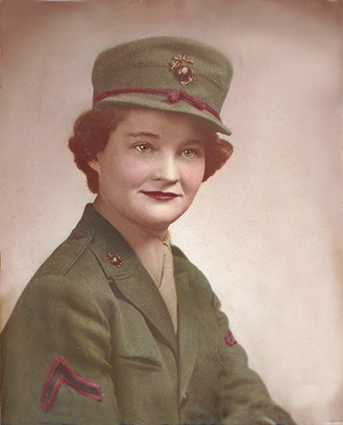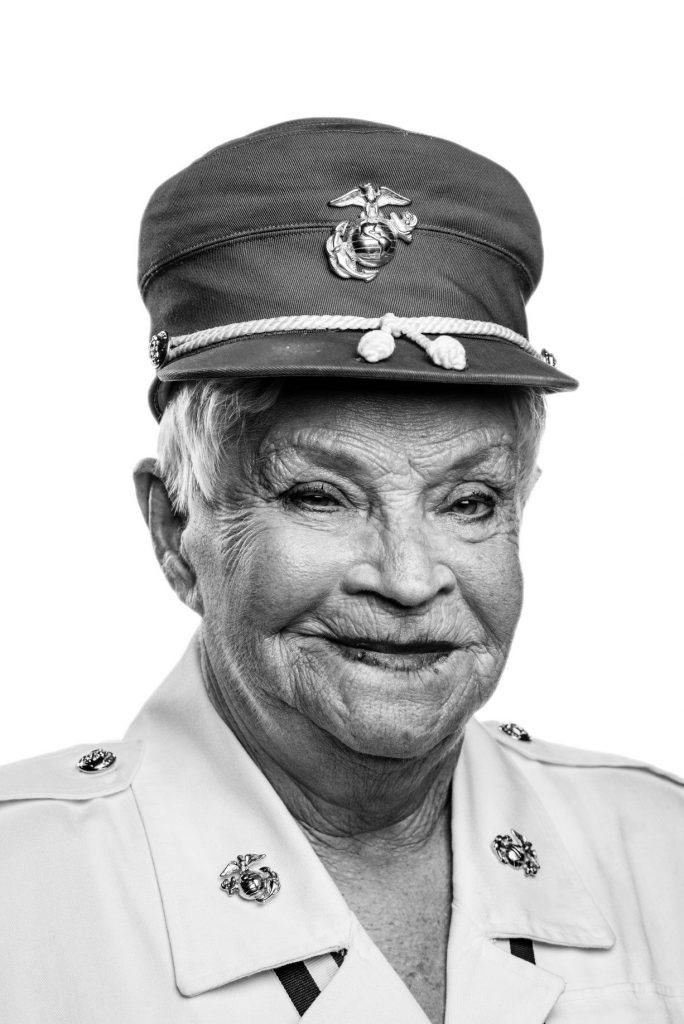
When Marilyn Cogswell enlisted into the Marines in 1951, she was entering during a point of massive transition within the military for women. Following World War II, the United States military rapidly scaled down from 12 million troops in 1945 to 1.5 million by 1948 and the women’s programs were no exceptions. Only a handful of women were allowed to remain in, mostly as advisors and advocates which would prove useful in pushing through the Women’s Armed Forces Integration Act, signed by President Truman in 1948. While a major revolution that allowed women to serve on active duty alongside men, it was still very limiting in several ways.
For instance, only two percent of the total force could be women on active duty, though the reserve components had no cap. The Marines, specifically, only allowed for 100 officers, 10 warrant officers, and 1,000 enlisted women by June 1950, just before the outbreak of the Korean War. Additionally, while entitle to the same pay, leave, allowances, and benefits as men, a married women’s husband or children was not considered a dependent unless she provided the chief support for income. The military overall had regulated women away from positions that they had previously held during war, mainly only allowing them into administrative duties. This shortsightedness was evident when the Korean War started. Women were still barred from combat roles or vessels and aircraft that might see combat, and still seen as a way to free up men to fight overseas. But, in only allowing them into administrative duties, it took time to rebuild those schools and integrate them to their new billets. During this, combat divisions were sorely lacking in fighting strength overall. 1951 would see massive expansions to this, as mobilization issues became evident, but women were still restricted to serving stateside.
This is the United States Marine Corps that Marilyn entered. Upon graduating her basic training at Parris Island, she would be stationed at Camp Lejeune and selected to be an artist. Shortly after her assignment, she would marry a fellow marine, John MacDougall, Jr, and begin a family with him, having twins. The policy on these types of matters has been outline some above, but a women could ask for administrative discharge based solely on marriage as long as they had completed a year of service if enlisted, reflecting the society’s general negative attitude against married women who worked. When factoring motherhood, a 1943 study group set policy on the matter that would last until 1970. It stated that:
It is believed that pregnancy and motherhood Oso facto interfere with military duties. . . , Granting of maternity leave would result in having ineffectives (sic); replacement could not be procured while the woman remained on the active list; and the mother of a small child would not be readily available for reassignment. Necessary rotation of duty assignments would require the family unit to be broken up for considerable periods of time, or at least until the husband made the necessary provisions to establish the home at the mother’s new duty station . . It is believed that a woman who is pregnant or a mother should not be a member of the armed forces and should devote herself to the responsibilities which she had assumed, remaining with her husband and child as a family unit.
Without Marilyn’s discharge papers, it can only be assumed that she either asked for separation, as she had done a year of service, or was discharged for having children. She and her husband would have six children all together, though tragically four of them would pass before adulthood. Still, Marilyn’s resolve in life carried her through those impossible times. She is pictured in our Veterans Portrait Project Gallery, which was taken by Stacey Pearsall. Her photo includes both a picture of her while she served and one of Marilyn in 2017, her a year before Marilyn herself passed away.


References
“History of the Women Marines.” Women Marines Association. Accessed from https://www.womenmarines.org/wm-history.
“History.” Women in the Army. Accessed from https://www.army.mil/women/history/
Stremlow, Mary V. A History of the Women Marines, 1946-1977. U.S. Marine Corps, Washington, D.C. 1986. Accessed from https://eric.ed.gov/?id=ED280948.
Explore More Stories
Celebrating Women’s History Month
World War II Pioneer: Dorothy Baroch
World War II Pioneer: Lieutenant Colonel Harriet West Waddy, U.S. Army



